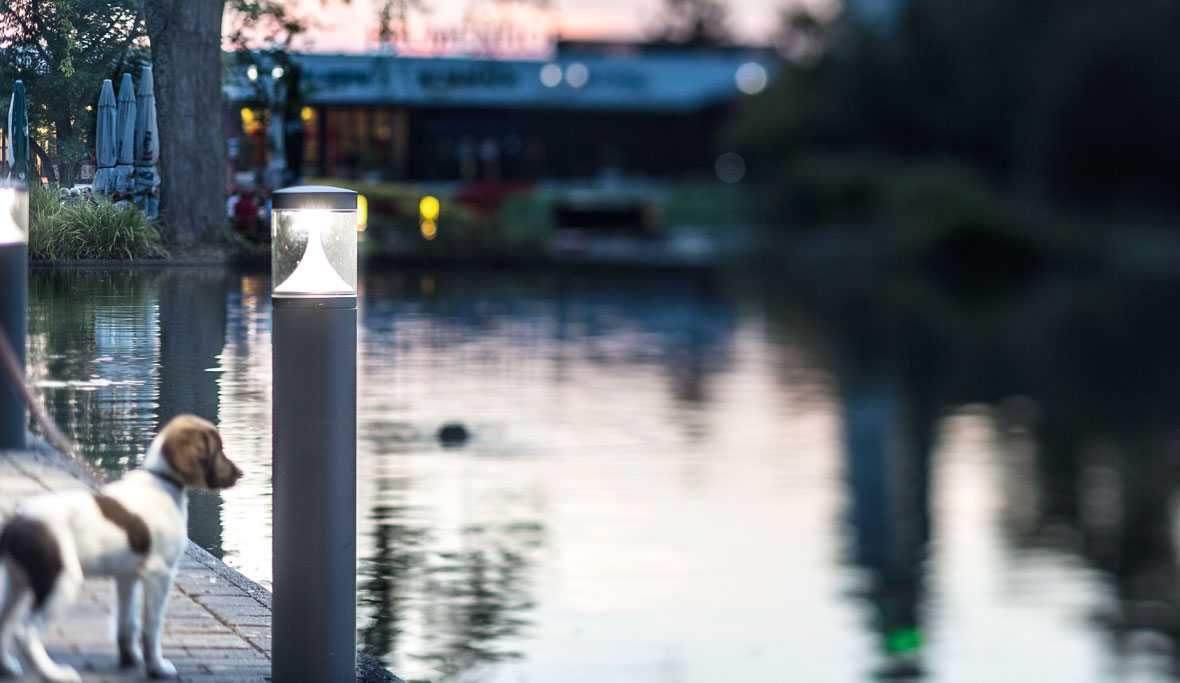Circadian rhythm and the inner clock
Knowledge for lighting professionals
The term "circadian rhythm" is defined as a biological rhythm with a duration of approximately 24 hours (circa=approximate, dies=day). A typical circadian rhythm is therefore the sleeping-waking rhythm of people.
Already in the 1950's, Gustav Kramer and Jürgen Aschoff researched the sleeping behaviour of people subjected to isolation conditions, without contact to daytime sequences and daylight rhythms, over several weeks in artificially illuminated rooms. Their sleeping behaviour was compared to those of other testees subjected to normal conditions influenced by daylight.
While the latter test persons slept regularly between 9 pm and 7 am, the sleeping behaviour (i.e. need for sleep) completely changed after just a few days in isolation conditions. The falling to sleep and waking up phase shifted each day. After around 21 days, the test persons slept between 4 pm and around 1 am at night. The sleeping rhythm therefore underwent an essential time shift after just a few days.
The inner clock must be synchronised with time during the day to enable such temporal shifts to be corrected with respect to daytime, and light in such situations is the strongest synchronising factor. Ambient light is used for synchronising the inner clock via the ganglion cells.
The effects of this synchronisation can often be explained with the sequence of natural daylight, which seen in terms of evolution represents the only light-time synchroniser. As a result, melanopic-effective light at lunchtime is able to prevent tiredness in the afternoon. White light with an increased blue component or light with a higher colour temperature (corresponding to the diffuse light of a blue daytime sky) is able to lead to increased alertness and attention.
This effect can also be put to use in evening hours to achieve increased attention levels with people despite the late hour of the day. At workplaces, light with a higher blue component is able to prevent sleepiness during the day, and simultaneously supports relaxing night-time sleep if this has been initiated by subdued lighting and darkness during the evening.
On the other hand, undesired phases of wakefulness can be induced by light if for example a bathroom luminaire with a high blue component is switched on at night, causing temporary sleeplessness. Biologically, such processes function with the discharge or suppression of specific hormones (melatonin, cortisol, serotonin etc.) that are partly responsible for fatigue, stress and performance capability.
The release of hormones from various glands in the brain is significantly triggered via the photosensitive ganglion cells, so that the influence of light on the hormone balance can be verified by hormone concentrations in the blood.

TRILUX is analysing the effect of light on people according to the term of Human Centric Lighting. The approach goes beyond standard system design and is dedicated to pure lighting and energy efficiency criteria.
The topic is mainly about the effect of light on human well-being and health, and biologically effective light is a part of this. The use of Human Centric Lighting is not only suitable for the medical-therapeutic sector, but also for office and industrial areas. It is however only competent lighting design that enables the optimal utilisation of such intelligent lighting solutions.
